Organizational structure chart, also known as organizational structure chart, is an intuitive reflection of various relationships within an enterprise or department. It vividly reflects the relationship between the top and bottom of the organizations and positions within the organization. It is generally presented in a tree structure, and there are special matrix, honeycomb and other forms of expression.
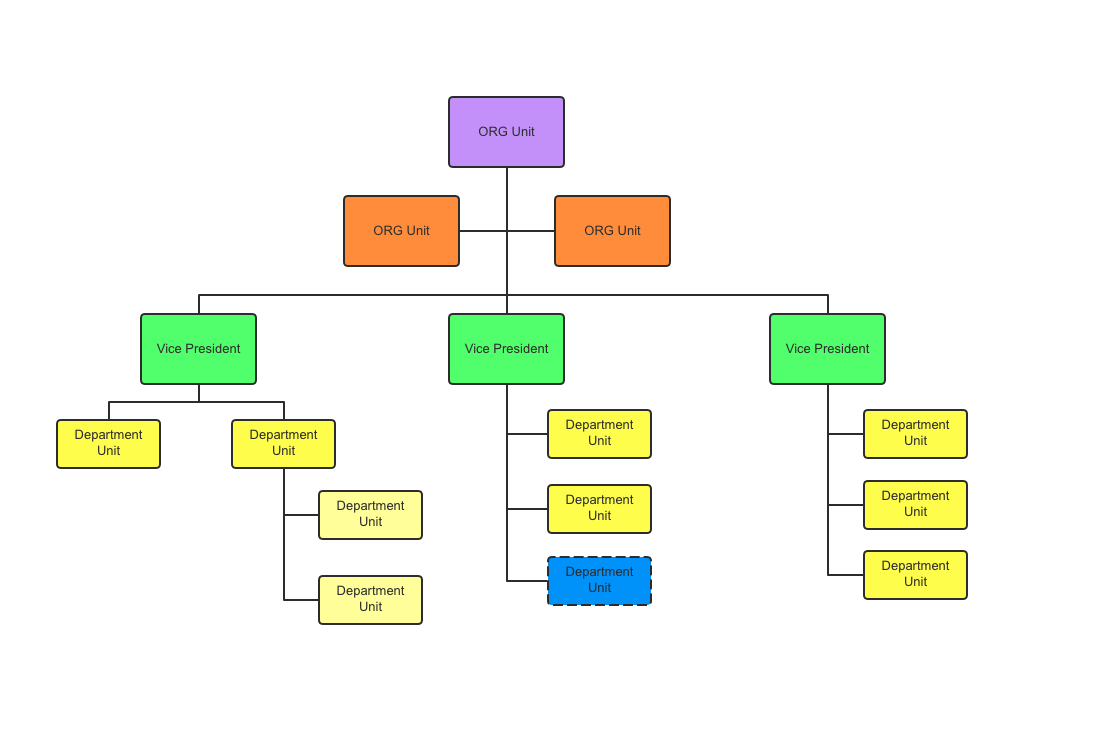
Common enterprise organization chart
An organization chart is not a simple list of people and cannot simply represent the affiliations between departments. The organizational chart can help managers understand the internal structure of the organization and facilitate management decisions. Reflect the power relations and communication channels within the organization, enhance the coordination of the organization; It can also make individuals aware of the work within their own organizations and strengthen their desire to participate in the work.

Organization chart style template
The organization chart is so important, but there are still many people do not understand and realize the importance of the organization chart, and even many company ceos and human resource directors do not pay enough attention to it. Xiaobian today will share the organization chart from the following four aspects: the classification of the organization chart, the composition of the organization chart, ProcessOn drawing the organization chart tutorial, beautiful organization chart template sharing, I hope that every enterprise and every department can pay attention to the establishment of a benign and reasonable organization structure.
Because different industries in the enterprise scale, division of departments and division of labor and configuration of different, each industry's organizational structure is certainly not the same, the common organizational structure chart can be divided into linear, functional, linear functional, divisional, simulated decentralization, matrix, the following will be explained one by one.
The linear organizational structure is also called the military structure, and it is also the simplest centralized organizational structure form, and its leadership relationship is established by a vertical system, which is shaped like a straight line from top to bottom. The linear organizational structure is only suitable for small scale enterprises, general operational organizations and small production enterprises are more used, and in large-scale modern production enterprises, due to the heavy and complex management tasks, this structure is not suitable.
Linear organizational structure advantages: the structure is relatively simple, clear responsibilities, unified commands.
Disadvantages of linear organizational structure: the person in charge is required to know a variety of knowledge and skills and personally deal with various businesses.

Linear organizational chart style template (includes: Avatar name title)
Functional organizational structure is also known as multi-linear organizational structure, from the senior level of the organization to the grassroots according to the function of the division of labor, the management of the same function of the business and its personnel together to set up the corresponding management department and management duties, is also the most common organizational structure.
Advantages of functional organizational structure:
○ Functional departments undertaking project tasks can give full play to resource advantages and complete reasonable internal resource allocation;
○ Functional departments facilitate communication and mutual support, core personnel can be shared to support multiple projects, saving manpower;
○ Project tasks and departmental tasks of project members are integrated to reduce the uncertainty of personnel changes and maintain continuity.
Functional organizational structure disadvantages:
○ When the interests of customers conflict with the interests of functional departments, the functional departments tend to ignore the interests of customers for the interests of the department;
○ For projects completed with the cooperation of multiple functional departments, the distribution of rights and responsibilities is not conducive to the communication and cooperation of various functional departments, and the balance of resource investment cannot be guaranteed;
○ Responsibility is not clear, which easily leads to the phenomenon of everyone grabbing and pushing.
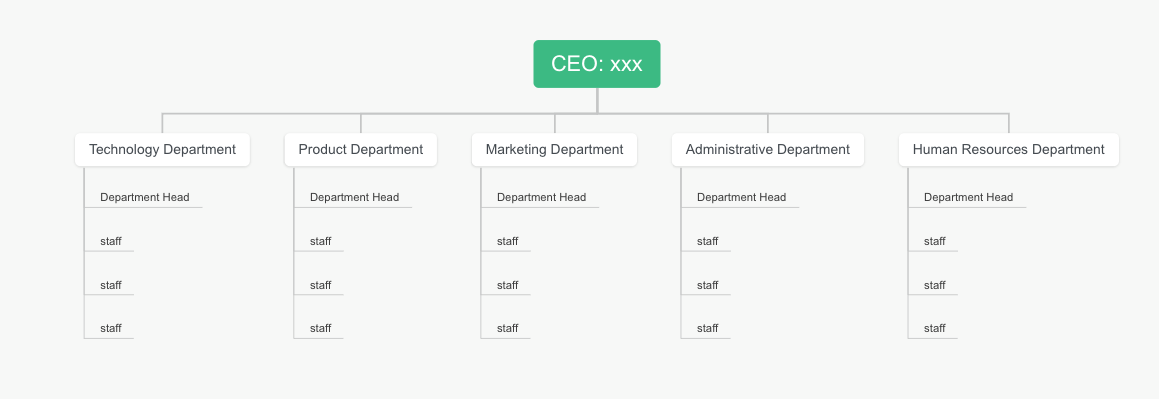
ProcessOn Mind Map makes it easy to draw a functional organization chart, you can quickly switch topic styles, just enter text content, come and experience it.
In view of the shortcomings of the linear organizational structure and the functional organizational structure mentioned above, the two organizational structures should be combined, and on the basis of the linear structure, corresponding functional departments should be set up under the heads of administrative departments at all levels to engage in professional management and serve as the staffs of the leaders. The organizational structure should be a combination of unified command by the supervisors and the staffs and guidance of the functional departments. It is called the linear functional organizational structure, also known as the linear staff organizational structure.
The linear functional organizational structure is often used in large and medium-sized enterprises and teams. The plans, programs and relevant instructions formulated by the staff of functional departments are approved and issued by the line supervisor; The staff officers of functional departments only play the role of business guidance and have no right to give direct orders, and administrative leaders at all levels are responsible level by level and implement a high degree of centralization.
Advantages of linear functional organization:
Combining the advantages of linear organizational structure and functional organizational structure, it can maintain unified command and play the role of staff officers;
○ Fine division of labor, clear responsibilities, each department is only responsible for their own work should be done, high efficiency;
○ High organizational stability, in the case of little change in the external environment, easy to play the group efficiency of the organization.
Disadvantages of linear functional organization:
The lack of information exchange between departments is not conducive to collective decision-making;
○ It is not easy to unify the goals between the line department and the functional department (staff department), the horizontal connection between the functional departments is poor, the information transmission route is long, there are more contradictions, and the coordination workload of the upper supervisor is large;
○ It is difficult to cultivate management personnel familiar with the overall situation from within the organization;
○ The system is rigid, poor adaptability, easy to follow the old ways, and it is not easy to react in time to new situations.
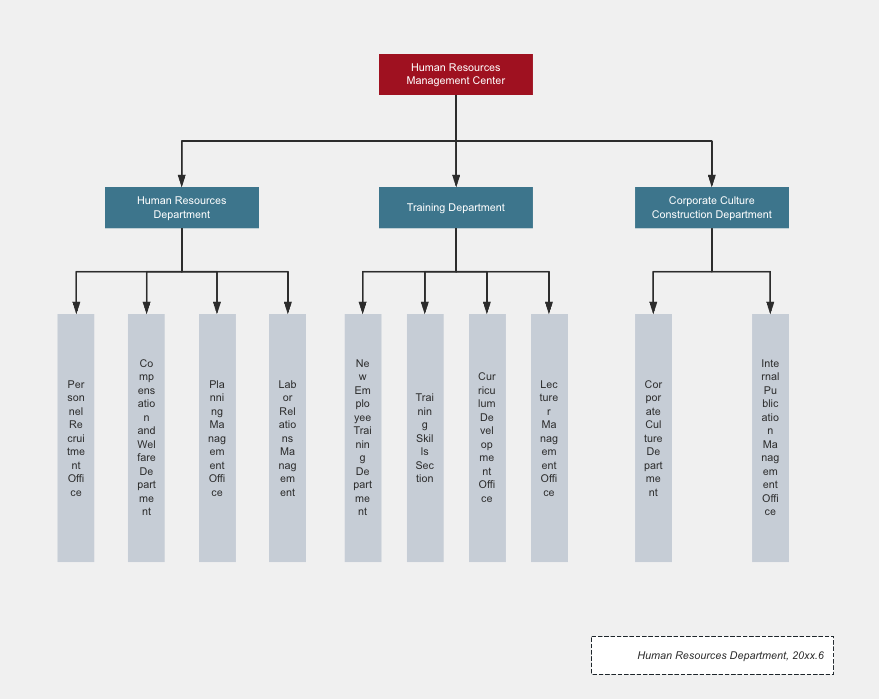
Linear functional organization chart
ProcessOn flow chart is compatible with linear functional organization chart, drawing is simple and convenient, drag and drop the basic graph to complete the creation, come and experience it.
Divisional organizational structure, also known as M-type organizational structure, originally originated from General Motors, refers to a product, region or customer based on the relevant development, procurement, production, sales and other departments combined into a relatively independent organizational structure form.
The divisional organizational structure is suitable for large enterprises with diversified industries, diversified varieties, independent markets, and rapid changes in the market environment. It is a decentralized management structure. Each division has its own independent products or markets, has strong autonomy in operation and management, and implements independent accounting. The company headquarters only retains the power of personnel decision-making, budget control and supervision, and controls the division through profit and other indicators. However, within the division, the organization is still designed according to the functional structure.
Note: The main difference between the divisional structure and the functional structure is whether the first level department under the top leadership of the enterprise is built according to the divisional structure or the functional department.
Advantages of divisional organizational structure:
1, can flexibly and autonomously adapt to the new situation in the market to respond quickly, both a high degree of stability, but also have good adaptability;
2, It can liberate the top leadership from administrative affairs and specific matters, and improve the overall efficiency of the enterprise;
3, it is beneficial to cultivate comprehensive management talents and reserve talents for the future development of enterprises;
4, ○ Increase competition and comparison, enhance the internal vitality of functional enterprises;
Disadvantages of divisional organizational structure:
1, independent internal interests, easy to breed departmentalism;
2, ○ Higher requirements for headquarters management, while the cost will increase;
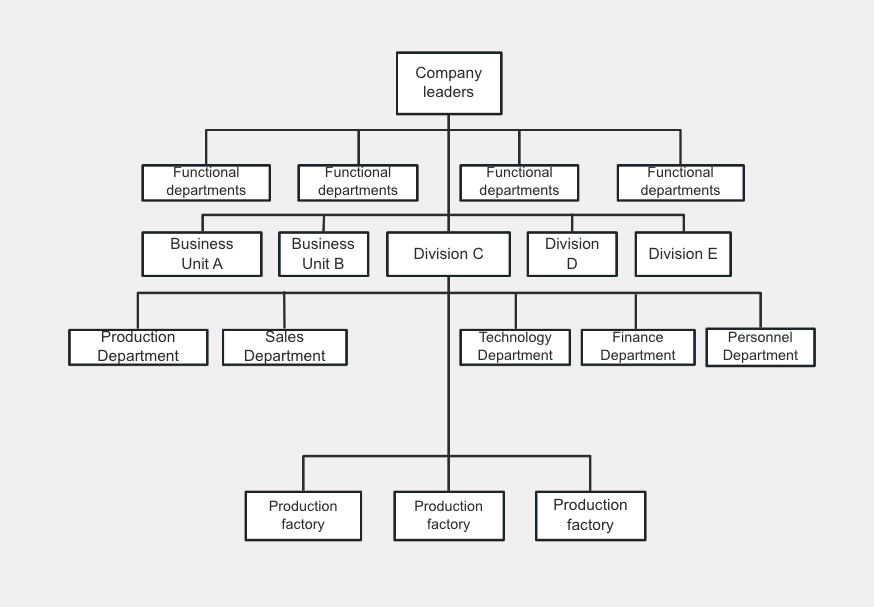
Common divisional organizational chart

Regional division organization chart
Simulation decentralization is a form of organizational structure between the linear functional type and the divisional type. Simulation is to simulate the independent operation and separate accounting of the divisional type, rather than the real division, which is actually a "production unit". These production units have their own functional organizations, enjoy great autonomy, and have "simulated" profit and loss responsibilities.
The birth of the simulated decentralized organizational structure is mainly to solve many large enterprises, it is difficult to really break down into several independent divisions, and because of the large scale of the enterprise, it is not easy for senior managers to use other organizational forms. At this time, the simulated decentralized organizational structure has emerged.
Advantages of simulated decentralized organizational structure:
○ Mobilize the enthusiasm of all production units;
○ To solve the problem that companies are too large to manage, top managers have delegated some power to production units, reducing their own administrative tasks, and focusing on strategic issues.
Disadvantages of simulated decentralized organizational structure:
○ It is difficult to clarify tasks for the simulated production unit, resulting in difficulties in assessment;
○ The leaders of each production unit are not easy to understand the overall picture of the enterprise, and there are obvious defects in information communication and decision-making power.
Matrix organization structure, also known as planning-target structure, is an organization form formed in order to improve the horizontal connection and lack of elasticity of the linear functional type. The matrix organizational structure combines functional departments and product (or project, service, etc.) departments to form a matrix, which is a structure in which the same employee maintains organizational and business contacts with the original functional department and participates in the work of the product or project team.
In terms of organizational structure, the functional department is a fixed organization, and the project team is a temporary organization, which is automatically dissolved after completing the task and its members return to the original department. The project team and the person in charge are also organized and appointed on a temporary basis, and the task is dissolved after completion, and the relevant personnel return to work in the original unit. Therefore, this organizational structure is very suitable for horizontal collaboration and research projects.
Advantages of matrix organization structure:
○ The combination of horizontal and vertical relations between enterprises is conducive to collaborative production;
○ The irregular combination of personnel in various departments facilitates the exchange of information and increases the opportunities for mutual learning;
○ Personnel allocation for specific tasks is conducive to exerting individual advantages and improving the quality of project completion.
Disadvantages of matrix organization structure:
○ The responsibility of the project leader is greater than the power, the project leader has difficulty in managing them, and there is not enough incentive means and punishment means;
○ Project members still have to return to the original unit after the completion of the task, so it is easy to produce temporary concepts, affecting the sense of responsibility.
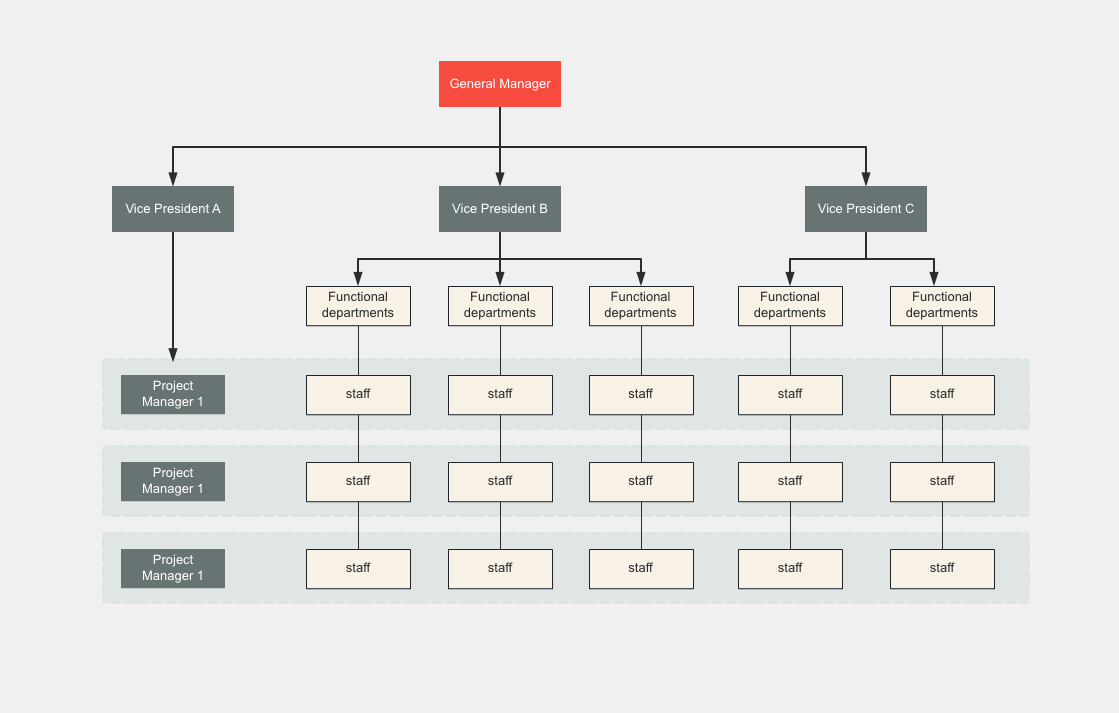
Matrix organization chart style template
The above are the six common forms of organizational structure chart, each enterprise and organization should choose and establish a suitable organizational structure according to its own business and development stage, so as to better play the role of the organization and improve the efficiency of the organization. Using ProcessOn, you can easily draw these kinds of organizational diagrams, so come and experience them.
The organizational chart consists of organizational units, relationship lines, responsibilities and authority, hierarchical structure, additional information, and remarks.
Organizational unit: represents a department, team, or position in an organization, usually represented by a rectangle;
Relationship line: Relationship line is used to represent the relationship between organizational units, can represent the relationship between superiors and subordinates, cooperation, reporting, etc., generally expressed by a straight line or dashed line;
Responsibilities and Authority: Each organizational unit should clearly define its responsibilities and authority, usually by adding text.
Hierarchical structure: It is generally necessary to show the hierarchical relationship of the organization step by step from top to bottom;
Additional information: such as employee name, contact information, position level, etc.
Note Information: Includes the release date, version, reading instructions, modification history, and producer of the organization chart.
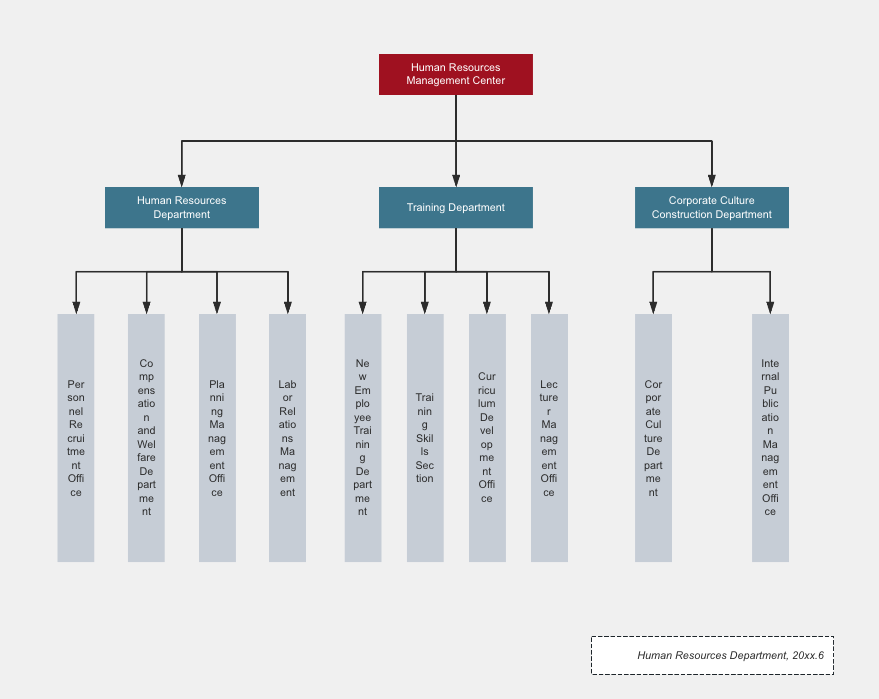
Organizational chart components
Through the above components, the organizational chart can reveal the following important information, which is particularly valuable to the company's leadership:
○ Division of display functions
○ Know whether authority and responsibility are appropriate
○ See if the workload of the personnel is too heavy
○ See whether there are unrelated personnel to undertake several loose, unrelated work
○ Find out if there is a situation that does not allow talented people to perform
○ Find out if there are important positions for people who are not qualified for the job
○ Determine whether the channels for promotion are smooth
○ Shows who is best suited for the next upgrade
In the process of drawing the organizational structure chart, we should clarify the organizational objectives, determine the basic framework of the organizational structure chart, analyze the responsibilities and relationships of various departments and positions within the organization, determine the levels and nodes of the organizational structure chart, select the appropriate organizational structure chart type according to the actual needs and organizational characteristics, and pay attention to the brevity and legibility of the organizational structure chart during the drawing process. Avoid over-complexity and redundancy. Here are three easy ways to create an organization chart using ProcessOn online Mapping tool.
01 Create a mind map, adjust the graph structure to the organization chart, or directly create a new organization chart
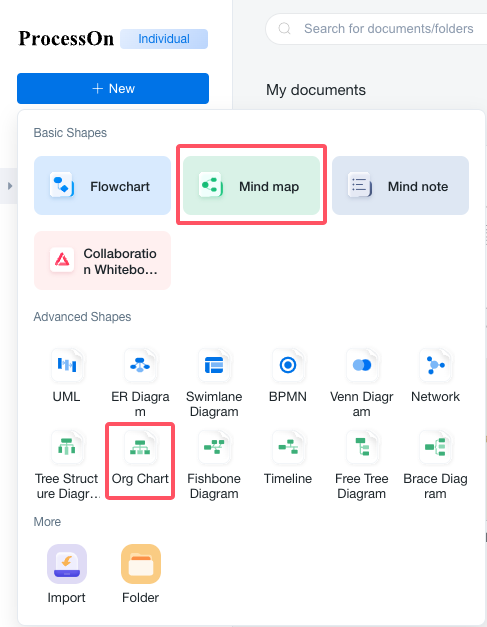
Create an organization chart directly or create a mind map
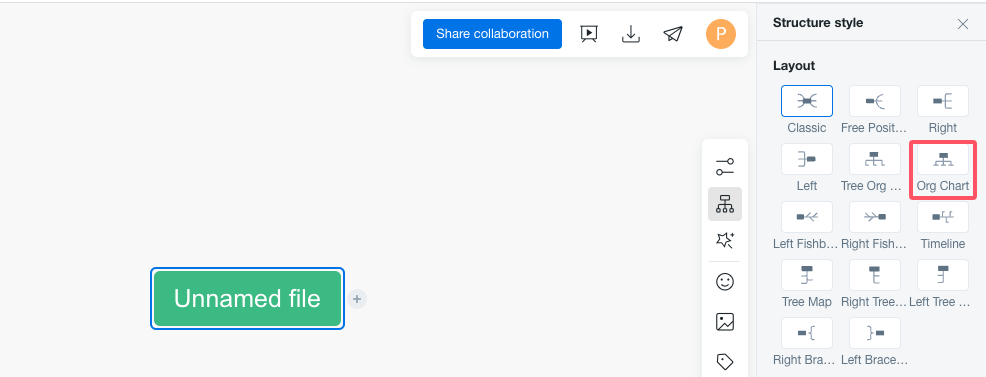
The general mind map structure is adjusted to an organization chart
02 Create node fill content, optimize by selecting theme style or fill color, adjust the lines
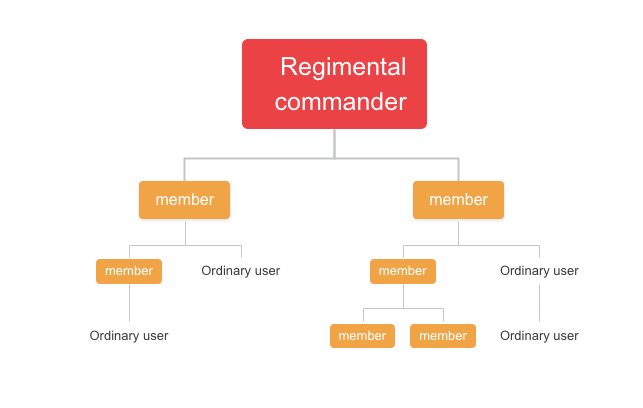
Fill content/Optimize theme/Fill color
03 Add an image or icon, and add remarks
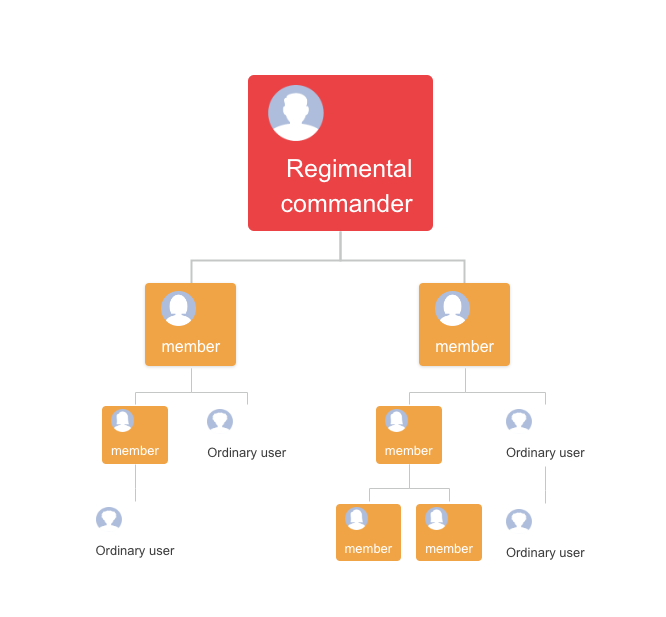
Fill picture/Add remarks
After the above three steps, using ProcessOn Mind Map to draw the organization chart is easy to complete, isn't it particularly simple? Come and experience it.
01 Create a flowchart and draw it by adding "Basic Graph" to the edit area
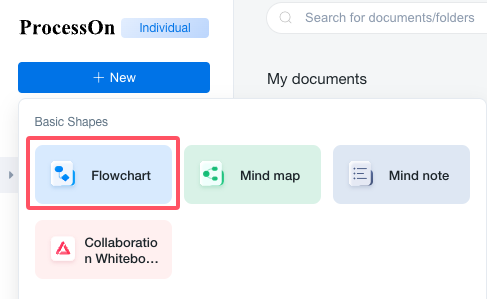
New flowchart
02 Create a hierarchical relationship and enter the organizational unit name

Create graphics/create hierarchy/fill content
03 Optimize the style, adjust the colors, pictures, lines and other details
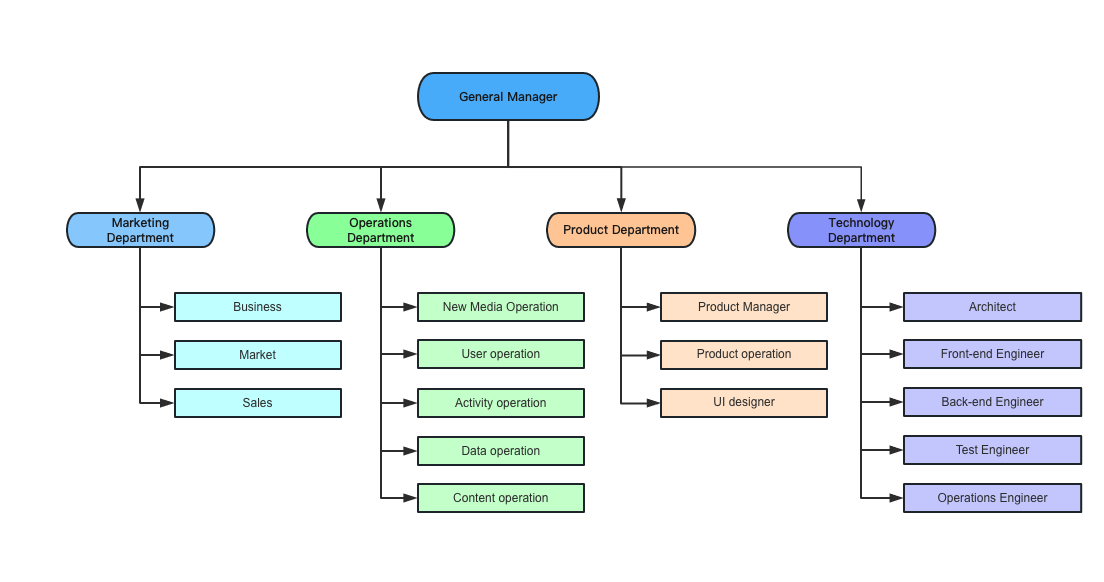
Optimize the organizational chart style
Using a flow chart to draw an organization chart, the play space is larger than the mind map, but also more professional, suitable for the completion of the more complex and professional organization chart drawing, come to experience it.
The ProcessOn Template Community (click to visit) provides beautiful organizational chart templates covering a variety of industries and styles. You can search "Organization chart" directly and choose the organizational structure that suits your business. This flexibility makes the organizational chart more in line with the company culture and individual needs.
01 Visit ProcessOn template community and enter "Organization chart" in the search box.
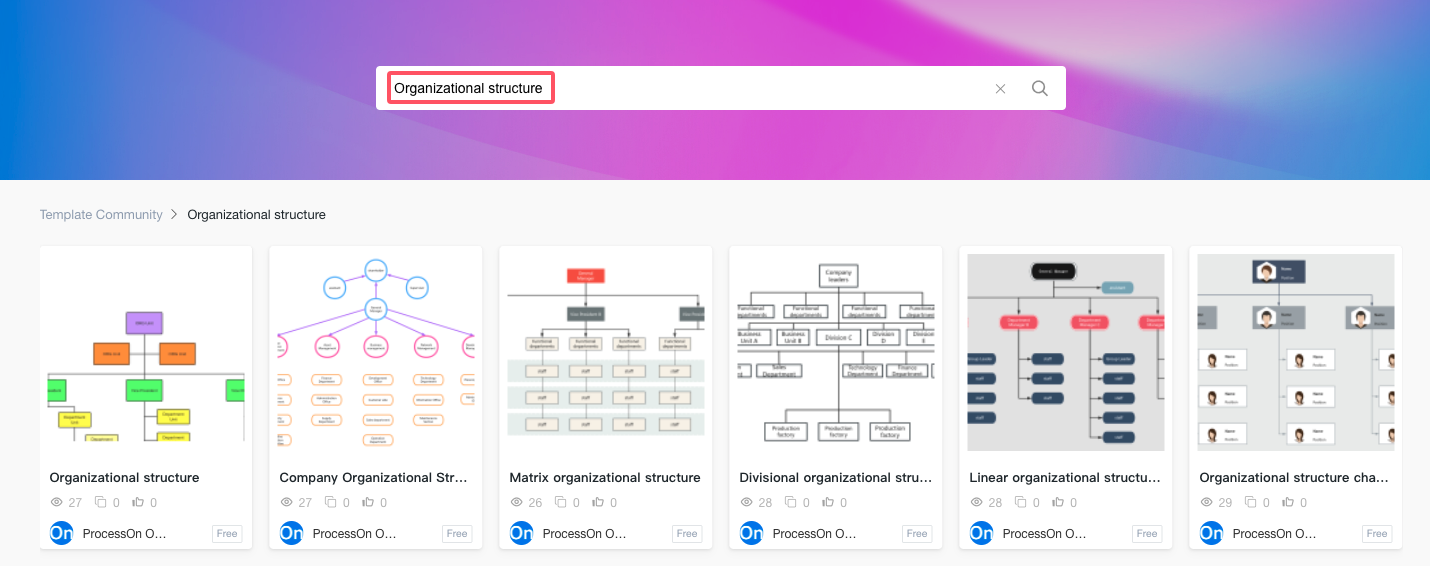
02 Find the right template, click "Use now";

03 Edit and create according to the existing template, input the content information of the organization, you can also quickly switch styles and styles, so that an organization chart is drawn.
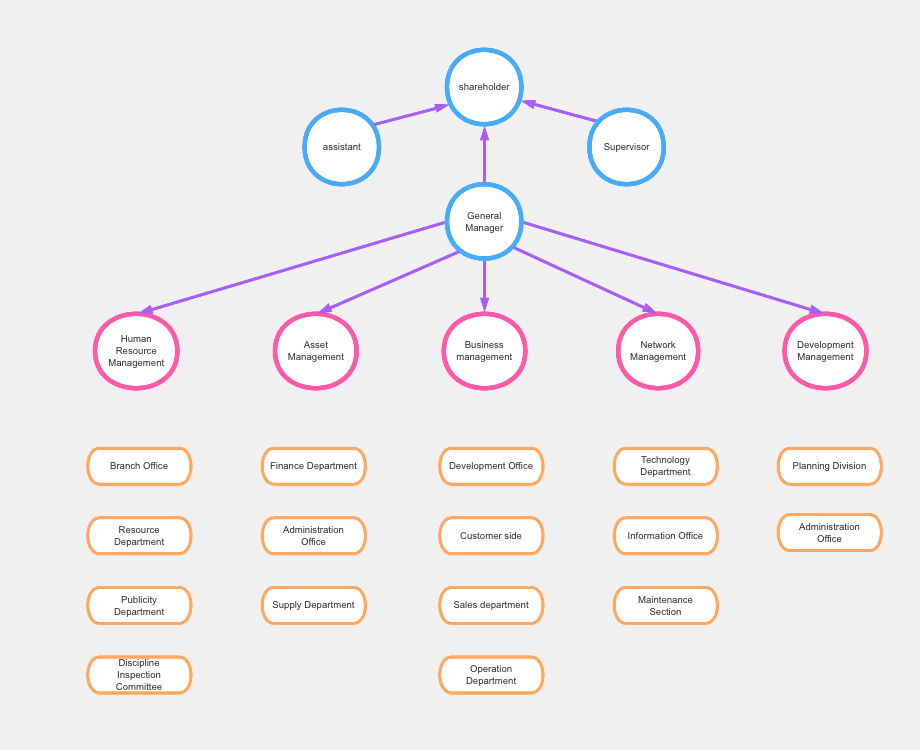
Through the above sharing, I believe you have the importance of the organization chart, and how to draw the organization chart has a deeper understanding and understanding, the following Xiaobian continue to give you to share the beautiful organization chart drawn by the excellent creators of the ProcessOn template community, I hope to inspire your imagination, for you to open the creative inspiration.

Functional organizational structure chart of large production enterprises
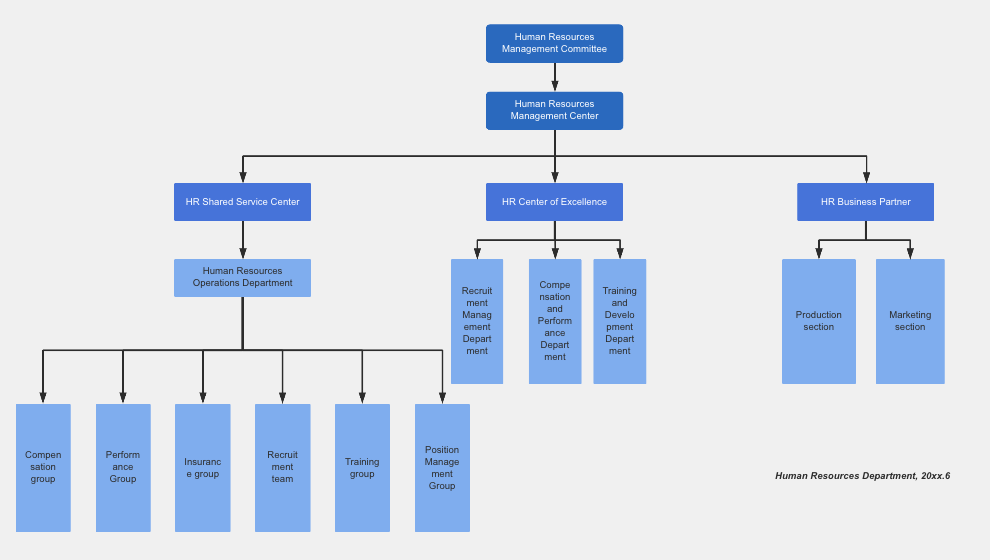
Human Resources organization chart
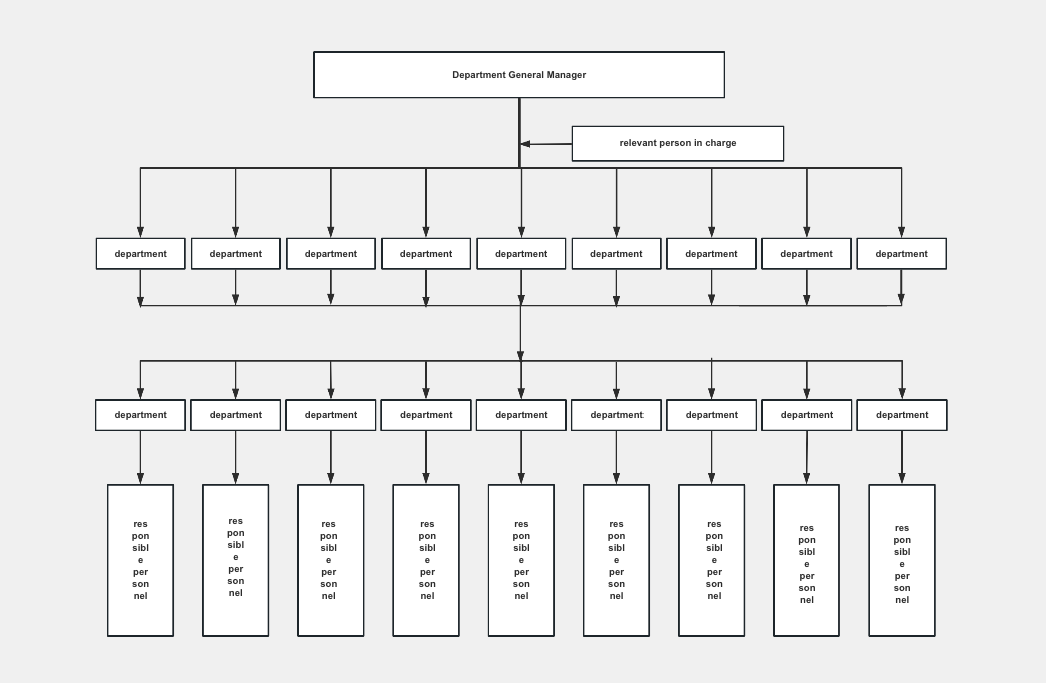
Human Resources organization chart
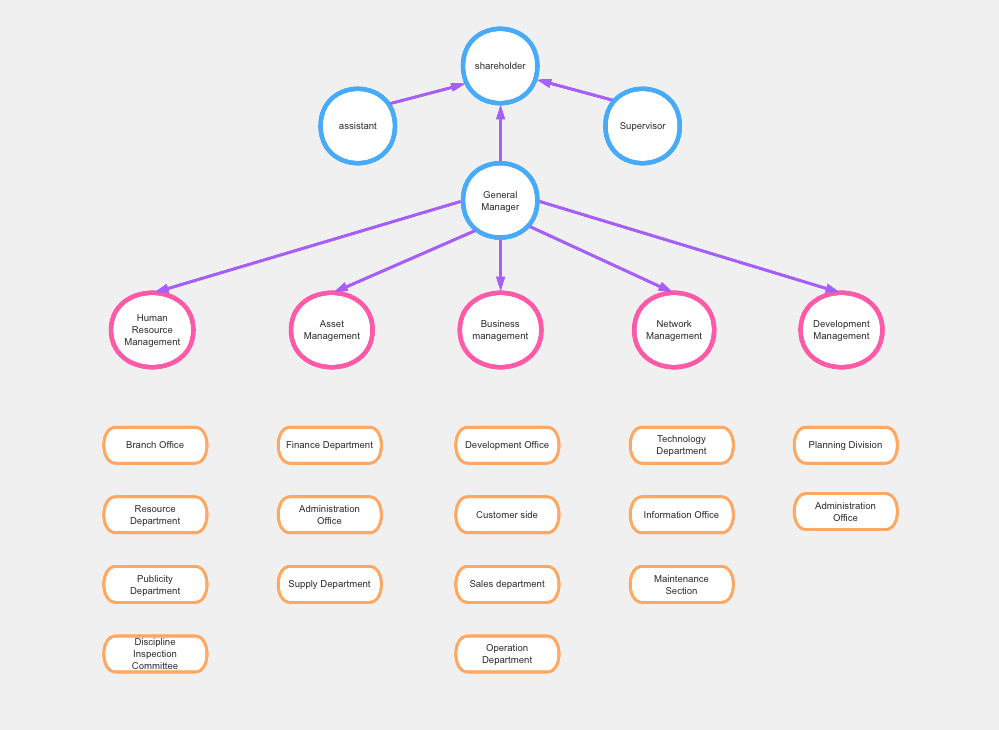
Functional organization chart of small business
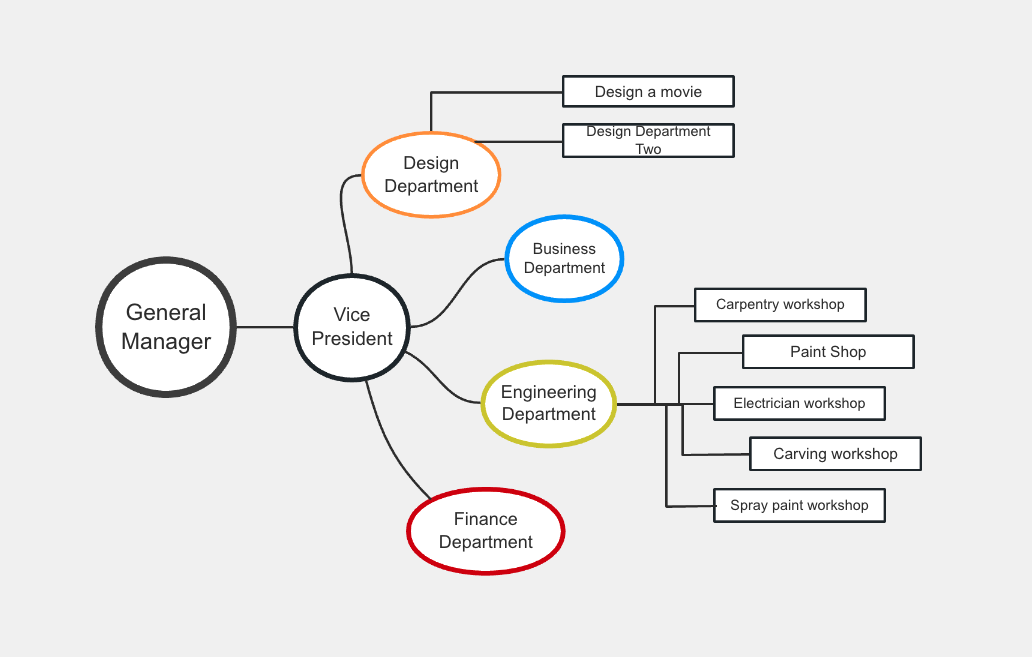
Fancy functional organization chart
Organizational chart is an important tool that can help business leaders to better manage an organization and facilitate the understanding of organizational collaboration within the enterprise. It is recommended to use ProcessOn online mapping tool to draw the organization chart, which can be drawn in various forms such as mind map, flow chart, convenient and quick, and there are massive organization chart templates that can be cloned and used.